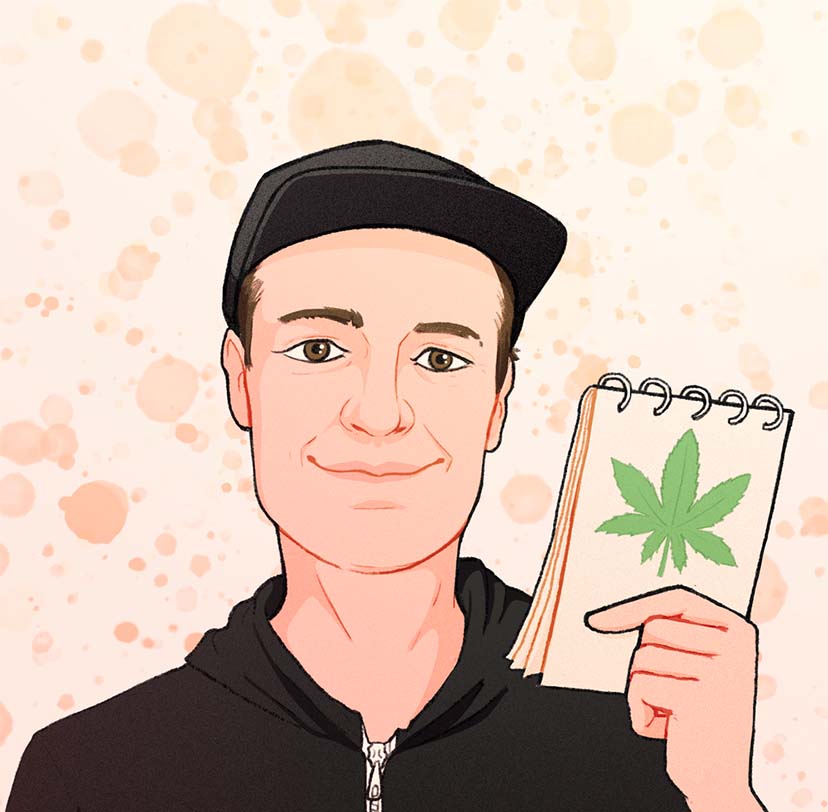GHF Honors Black History Month
June 13th, 2022
Written by Zack Ruskin
Putting aside the farcical notion that Black American history need only be celebrated for four weeks a year, the arrival of February and Black History Month nonetheless provides us with an excellent opportunity to explore a subject of universal and essential importance.
It is, quite simply, impossible to engage in a good faith discussion about the history of American cannabis without also acknowledging our nation’s long, shameful legacy of racism, prejudice, and discrimination. Indeed, stretching back centuries before the U.S. would even get around to criminalizing cannabis, it was the work of enslaved African peoples forced to work the fields for colonists who grew our nation’s first hemp plants.
Thus begins a nightmarishly long saga that has lasted into the present day. Though there are still many miles to go on the road to true equality, there has also been remarkable progress and reason for hope. But, by and large, the stories of both American cannabis and that of our nation’s formation and development are ones deeply marred by the undeniable stain of systemic racism.
ORIGINS
As best as we know, hemp plants were first grown by early American colonists, who mostly relied on it for textiles, rope, clothing, and other non-consumption purposes. Of course, to say colonists were the ones who “grew” anything is a gross distortion of the truth, given such labor was being forced upon enslaved African peoples who’d been kidnapped from their native homes and brought across an ocean, if not several, for explicitly inhumane purposes.
At the time, growing hemp was not only illegal, but mandatory in some of the colonies, ensuring demand for the crop remained high and, as a result, establishing a legacy of Black expert cannabis cultivators who have gone on to collectively define the culture and plant itself in countless, vital ways.
Though folks were certainly smoking hemp in some form back then, the popularity of cannabis as a recreational drug gained strong traction following the Mexican Revolution of 1910, when, as we noted in the first of our four-part deep dive on the history of cannabis, “a large exodus of immigrants left their homeland for the U.S…. and brought their unusual habit of consuming cannabis recreationally with them.”
CRIMINALIZATION
Though no evidence of the so-called “reefer madness” that would soon become a
rallying cry for those eager to demonize cannabis would ever materialize, the
effectiveness of the campaign was cruelly efficient. In essence, politicians realized that cannabis could serve as a convenient scapegoat to both quell unwanted immigration and to oppress Black Americans at a moment when jazz music and its rich cultural legacy were just starting to blossom.
If you can’t make jazz or moving to America illegal, target a proxy with an easier sales pitch. In many ways, that’s the problem with drug laws in a nutshell.
But by 1913, California had outlawed cannabis, with the total rising to 29 states by the 1930s. Congress made its first federal action in 1937 with the Marihuana Tax Act, before truly dropping the hammer in 1951 with the Boggs Act, which created the concept of mandatory sentences for drug crimes.
By and large, the criminalization of cannabis in America can be credited to two people: Harry J. Anslinger and President Richard M. Nixon. Serving an unprecedented term of 32 years, Anslinger is today regarded as a chief architect of the policies and prejudice that would underscore America’s decades-long (and definitively failed) War on Drugs.
For proof, look no further than Anglinger’s past quotes suggesting that “reefer makes darkies think they’re as good as white men” or that the primary reason to outlaw cannabis is “its effect on the degenerate races.” Tragically, by the time Anslinger finally relinquished his post in 1962, the damage was already done, setting the table for our 37th President, Richard M. Nixon, to usher in decades of violence, broken families, and mass incarceration.
WAR ON DRUGS
It’s impossible to distill every element of America’s War on Drugs into a succinct
summary but here are some of the most important details to bear in mind.
In 1970, President Nixon signed the Controlled Substances Act into law. Still in place today, this major shift in drug policy, coupled with the decision to schedule cannabis as a Schedule I controlled substance under this new framework, would grind meaningful progress on drug reform to a halt for decades.
Simultaneously, enforcement of these new laws — compounded with stricter and
stricter codifications like the Anti-Drug Abuse Act of 1986 and the Violent Crime Control and Law Enforcement Act of 1994 — made it easier and easier for law enforcement to detain, search, arrest, charge, and convict anyone they suspected of illegal drug activity.
The results were staggering increases in incarceration for nonviolent drug offenses, which grew from 50,000 in 1980 to 400,000 by 1997. And of the people affected, a vastly disproportionate number were Black and brown. In a review of federal and state incarceration data, the AP Press found that over a period of thirty years, the Black incarceration rate in America “exploded from about 600 per 100,000 people in 1970 to 1,808 in 2000.”
Sadly, it would take until 1996 for California’s Prop 215, which made the state the first in the nation to legalize medical marijuana, for the arc to begin bending back towards justice. Initiating a domino effect that continues to play out today, more states would follow California’s lead in approving medical marijuana before the voters of Colorado and Washington State eventually took the next logical step forward by legalizing recreational cannabis in 2012.
Today, we’ve entered a new era for cannabis, one in which immense focus is finally being paid to ensuring African Americans and others negatively impacted by past drug law are given an equal, if not early, opportunity to flourish in the legal cannabis industry.
EQUITY DISPENARIES ETC.
Thanks to the tireless work of advocacy groups, lawmakers, concerned citizens, and determined leaders, many states and cities with legal cannabis markets today include stipulations regarding what’s known as equity licensing.
To operate in a plant-touching capacity in the cannabis industry (which is to say, to be in direct contact with the plant or its compounds), one must have the requisite license. That goes for dispensaries, delivery services, manufacturers — everyone! The idea behind equity programs is to ensure those most harmed by the War on Drugs can get first or equal access to such licenses.
Oakland, California boasts the nation’s first equity program, though the concept has now spread far and wide, to the point where some of the bills currently under
consideration in Congress aimed at legalizing cannabis at the federal level include
mandatory provisions for equity licensing.
But it’s not just a fair access to the industry as it exists today: restorative justice in this case also includes the expungement of past criminal records, pardons, or sentence commutations for those still behind bars for cannabis crimes; and reliable sources of funding, education, and support to ensure that those who are able to obtain licenses are subsequently able to thrive.
It’s a subject no mere month could contain, but with the opportunity before us, Glass House Farms is honored to recognize the vital importance of Black History Month and encourage you to do the same.

Zack Ruskin
Zack is a freelance cannabis and culture reporter. He served as San Francisco Weekly's "Pacific Highs" columnist for six years, covering local equity programs, Bay Area cannabis news, and interviewing everyone from Willie Nelson to Rep. Barbara Lee. His other bylines include the San Francisco Chronicle, Leafly, California Leaf Magazine, The Nib, Vanity Fair, KQED, and Variety. Follow him on Twitter: @zackruskin.

